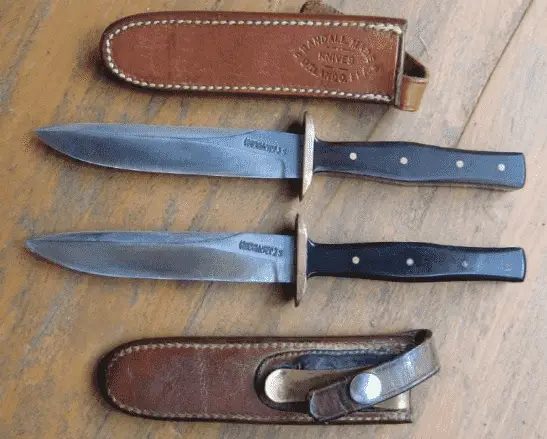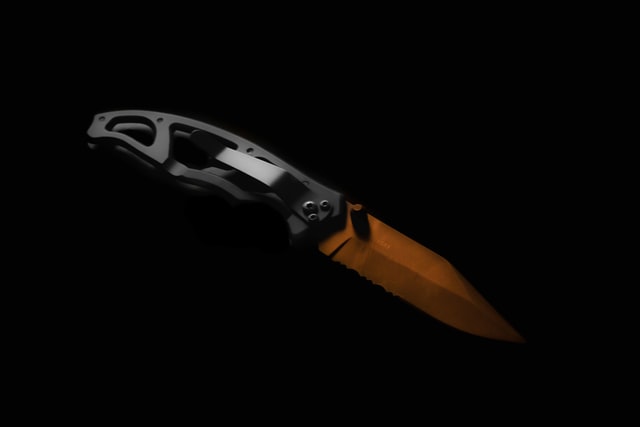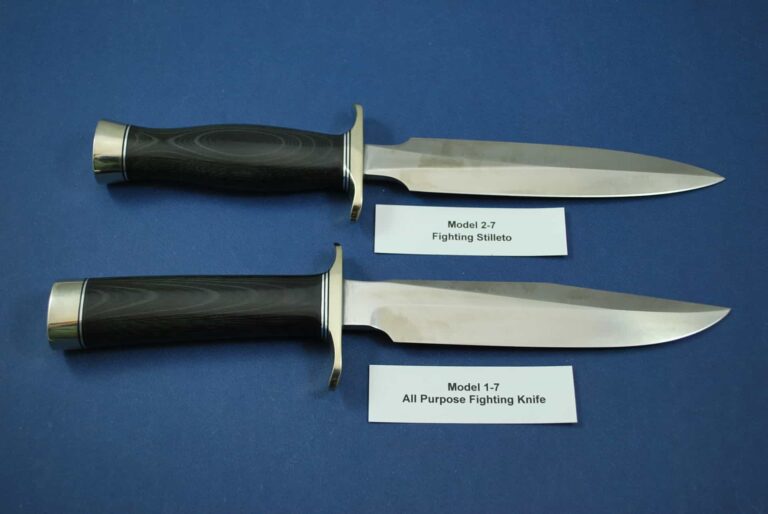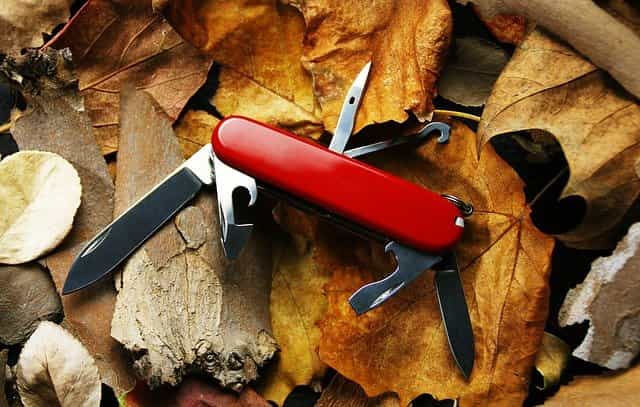Do you have a knife that you want to have sold? Or do you just want to know the value of your knife? Maybe you want to buy a knife and you want to be sure it’s worth the price too?
No matter which it is, there are a series of reasons why you might need to know the value of a knife you have at hand.
When that time comes, here is a guide to appraise your knives and know what they are worth.
Table of Contents
How Much Are Knives Worth?
There are a series of factors that go into determining the price of a knife. There are also some methods to know what your knife would be worth.
Here, I list out some of those for you:
#1 Date the knife to a specific era
Knife dating can tell you a lot about your knife.
For knives that were made several years in the past, dating to a specific era can help you determine where the price of that knife will fall on the spectrum. Besides that, you also get to know if the knife is original or fake.
You can get started with the knife dating guide section to see how to date your specific knife. Some of the guides that I have already written include:
- How to date a ka-bar knife;
- Dating a kissing crane knife effectively;
- The complete Barlow knife dating guide;
- Signs to tell if a 1918 trench knife is real;
- Dating a Marbles knife to a specific era; and so much more.
When you can tell that the knife is an original vintage model, you can usually find relative price guides out there to know what it’s currently sold for.
#2 Attend knife and gun shows
Most knife and gun shows have some great knives on display.
Some of these knives will be newer models from brands just looking to push their products to the market. On occasion, though, there would be those vintage knives brought by knife enthusiasts.
You could get the chance to purchase some of these knives while others are just for show. On the off-chance that you come across a vintage knife which you also have one of, ask the dealer for what it’s worth.
Of course, if they are not looking to sell, make it obvious that you are not trying to pry their possession away from them. Most dealers would appreciate a kindred spirit like yourself and be willing to walk you through the pricing guide.
Or, just take your knives to these shows and have a collector look at them. Be careful that they don’t try to strong-arm you into selling some good knives or swap them out though.
#3 Follow knife auctions and bidding
Look for knife bidding websites and follow the bids.
This is usually not a true indicator of price sometimes since it’s the highest bidder that wins. That highest bidder might not be bidding much anyway so you get a skewed idea of what the knife should cost.
If you follow these things for a while, you tend to get the hang of it and can pretty much tell what range certain knives sell for.
Likewise, take note of some knives that will start at a higher pricing level than the others. This can be due to a series of factors such as:
- The age of the knife;
- The condition of the knife;
- The era when the knife came from; and
- Popularity with collectors, among other things.
Always look out for the price that these knives sell for, not what they are listed at.
#4 Ask other knowledgeable collectors
I always recommend going with collectors and knife experts that know what they are doing. It is also best to approach those that you trust to be credible, else they could try to take the knife from you via shady tactics. Especially if it is a really rare one.
I don’t think there are a lot of knife experts just walking the streets. When you find one, hold them close.
#5 Compare your knife with a genuine listing
If you find a genuine listing on authentic websites/ mortar-and-brick stores, compare the knife model with anyone you have to know what it should cost.
Note that even if the knives are made from the same brand, they might not be the same model nor from the same year. Look at the Schrade knife dating guide for example which has over 60 models from 20 years to choose from.
Try to date your knife close to the one on sale as possible and you’ll have a good price range to choose from.
#6 Flaws bring down the knife’s value
Flaws might show up with age but we all know that they could have been prevented if the knife was maintained properly too. Some knife chips here and there, rust on the blade, and broken scales, among other things, mean the knife is far from mint condition.
While some collectibles will only ever live in a box, others are used as everyday knives. You cannot imagine that anyone would want to use a broken knife as an EDC.
#7 Check the rarity of the knives
Some PUMA models were never highly demanded when they were being made, so they never went into mass production. In the same timeframe, some great knives (such as Scout knives) had a lot of success and they had to be produced massively to meet the demands.
Now, while both knives might have come from the same time – or the latter even edging out the former on age – those PUMA knives will still sell for a bigger premium. The rarity that comes with them means you can’t always come across one in the wild the same way you would the other model
#8 What’s the handle made of?
This point plays right into rarity as explained in #7 above.
I would reckon that you could find 1,000 oak trees before I found ten sabretooth. So, if my knife handle were made from something as rare as the teeth of a saber, I believe it would be worth a lot more than knives with oak handles.
See where I’m going with this?
If your knife handle is made from a rare material, then you can get more for it.
What Makes A Knife Valuable?
A series of factors combine to add to the value of a knife. In more cases than one, here would be the factors to consider:
- Price set by the seller – Always remember that the seller can choose to list their knife for any price that they deem fit. That could be you or anyone else, and it doesn’t mean that the knife is over-valued. The seller either gets a buyer or not, but they have the right to set their prices.
- Age of the knife – A well-made knife that has seen a lot of decades is worth something, and one that has seen a few centuries is worth even more.
- The brand name – Some knife brands are favored by collectors since they were known to make great knives back in the day. Some of these are Ka-bar, Camillus, Marbles, Schrade, and Case. These vintage models tend to attract a good sum.
- The era of the knife – Knife collectors must think that knives that have seen the war have a lot of stories to tell. Hence, the price tag that comes with these knives. If you have one of such knives, you are in for a good payday – but I would advise that you hold on to it.
Mistakes to Avoid When Buying A Vintage Knife
So, you want to own a little piece of history as these vintage knives bring with them, right?
Make sure to avoid these mistakes for a seamless experience:
- Don’t spend more than you can afford on a knife. You will always find great vintage knives within your budget.
- Don’t buy a knife as an investment. While some of them have their values go up after some time, others may just decrease massively in value.
- Never buy a vintage knife if you don’t know about it. There are a lot of scam dealers out there that will ride your ignorance to sell you something not worth it.
- The condition of the knife is much more important than the age. It is better to have a 1980 knife in mint condition than a 1970 knife that is already falling apart. Remember that any restoration you do on the latter knife will ruin its vintage appeal.
- Get the box and paperwork if you ever intend to flip the knife for a possible profit in the future. Collectors are starting to get serious with such nifty details and that can bring down the price your knife sells for in the long run.
- There is a difference between the terms vintage, antique and collectible. Make sure you know what those are before you get started on buying any knife at all.
Are Old Knives Valuable?
After everything that we just went through together, I believe that old knives are valuable enough.
It depends on the kind of old knife, the manufacturer of the knife, the era it came from, and its condition, among other things. With all other things being equal, though, old knives are worth some money and are surely valuable.
If you’ve got one, hold on to it and probably pass it down. If you ever wish to sell it, make sure you get a fair price that you are willing to take and forget about the knife for.
When looking for one to buy, look through this knife dating category for some help, and make sure to avoid the mistakes above too.
Happy collecting, selling, and appraising!


![26 Knife Safety Tips for Kids & Adults [+ Infographic]](https://cutsandcarves.com/wp-content/uploads/2021/06/26-Knife-Safety-Tips-for-Kids-Adults-Infographic-768x1024.jpg)




